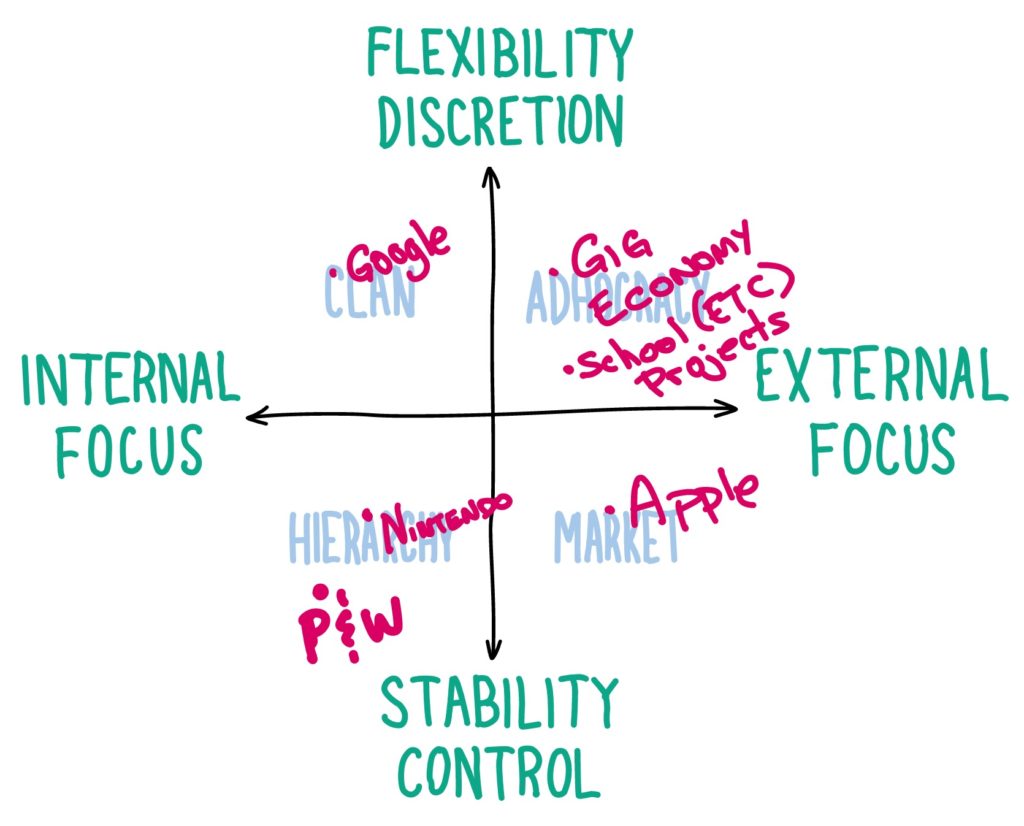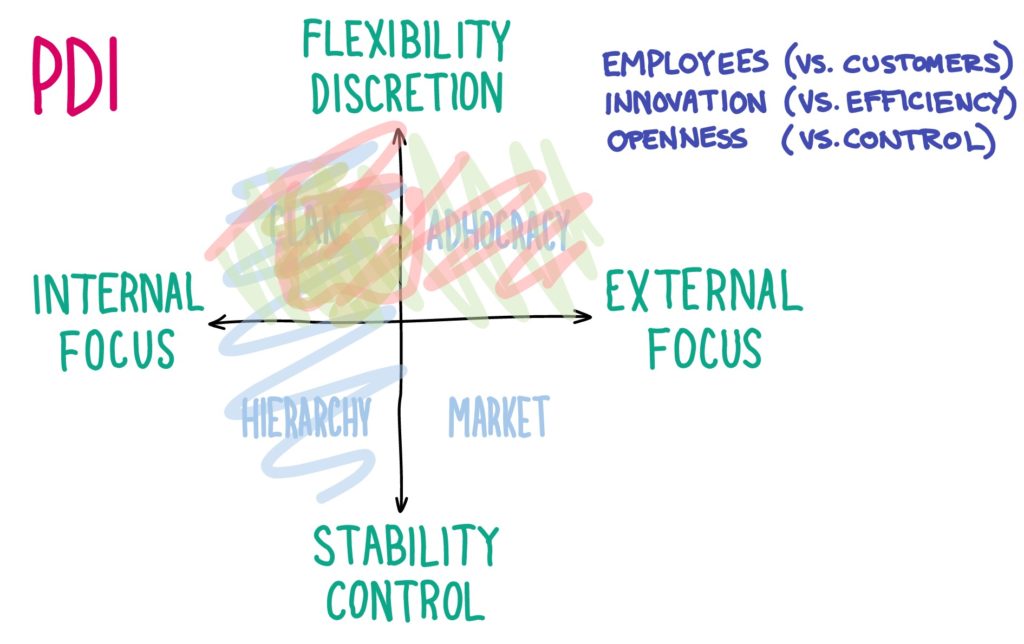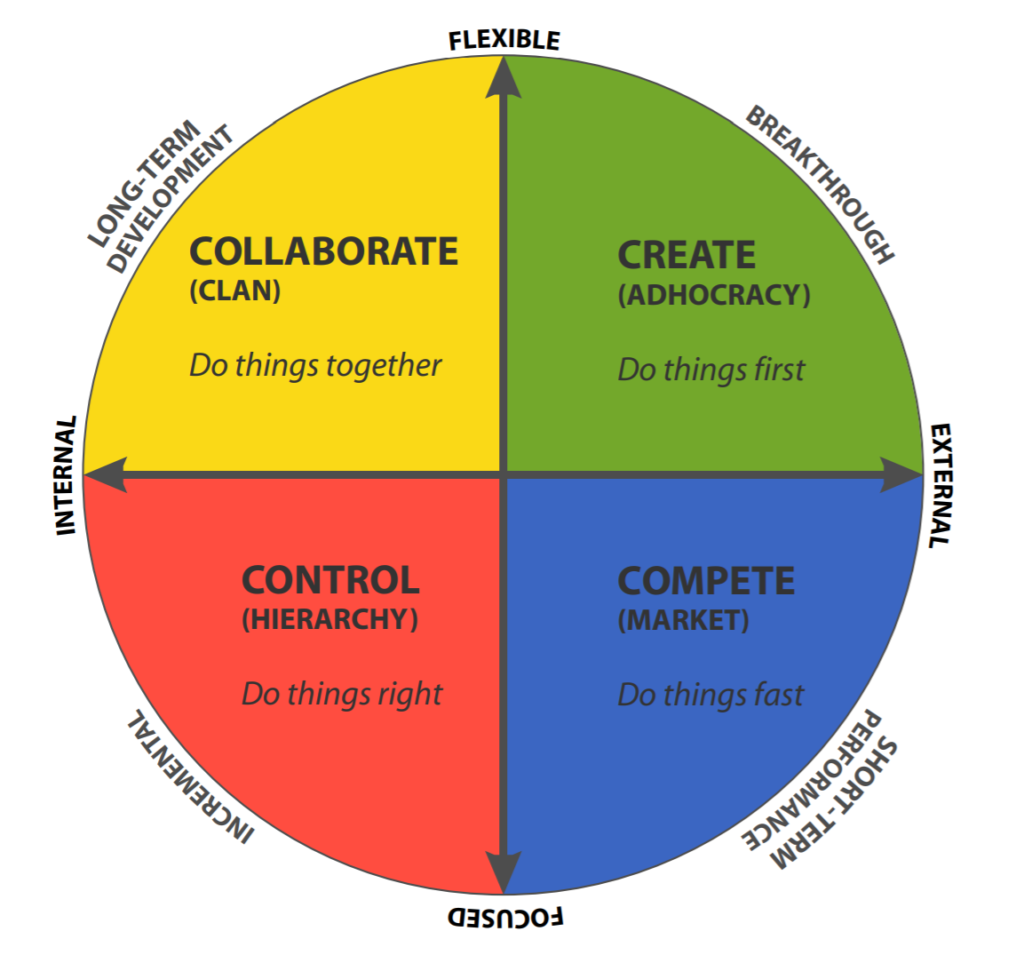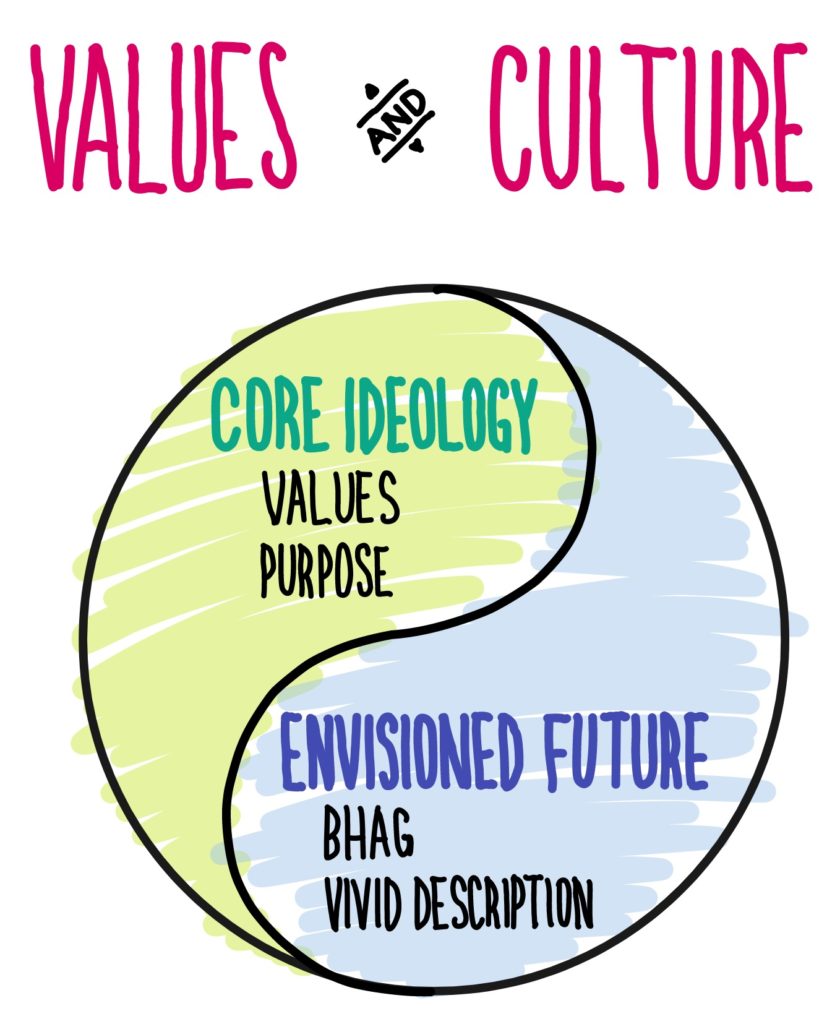
In our first week of class we talked about Vision based on Jim Collins and Jerry Porras’ work in Built to Last. We skipped over Core Values in that part and returned to it today.
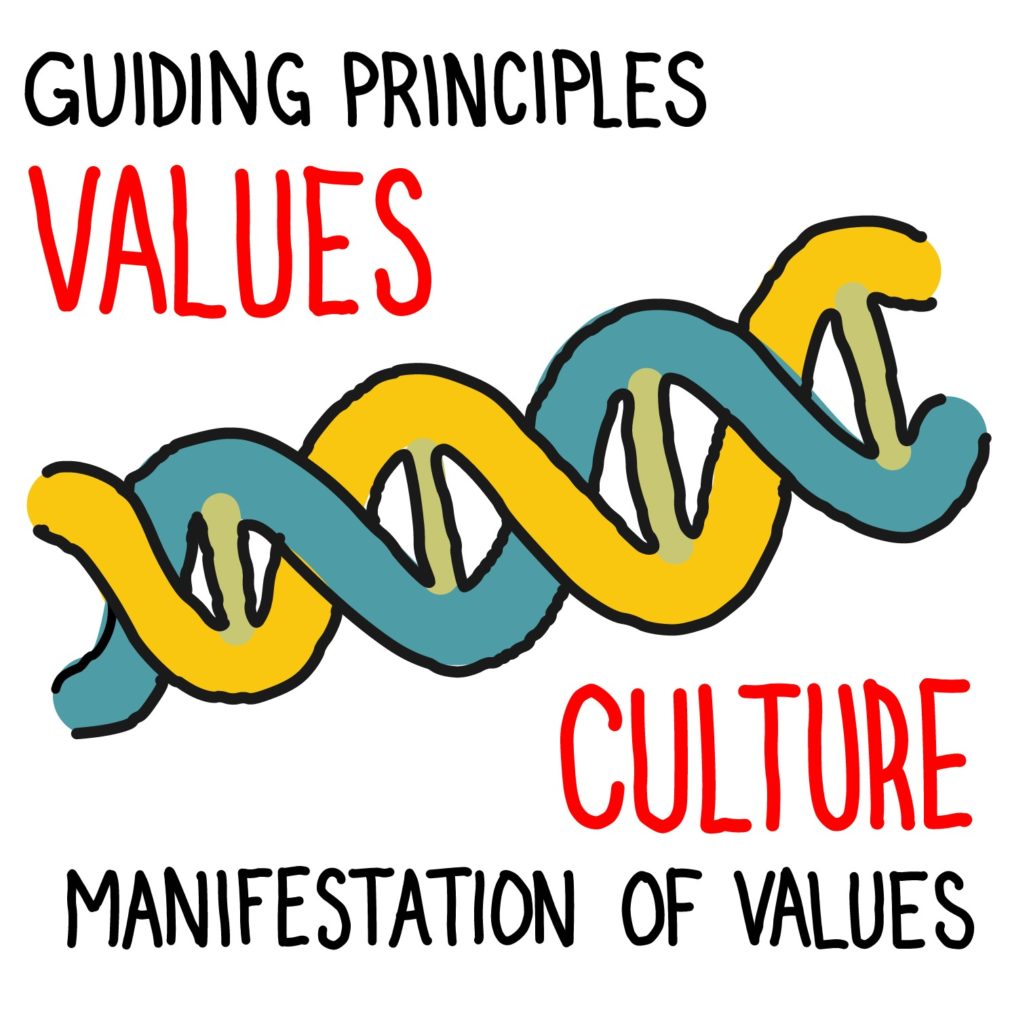
The Core Values of your company are the guiding principles under which all decisions in your company are made. Even if the company values are never articulated to the employees, they are in the DNA of the company and affect every aspect of it. And like DNA they are hard to change.*
The company’s Culture is how these values manifest themselves in its daily operations – from visible aspects like office space and dress code, to invisible ways like how decisions are made and promotions are earned.
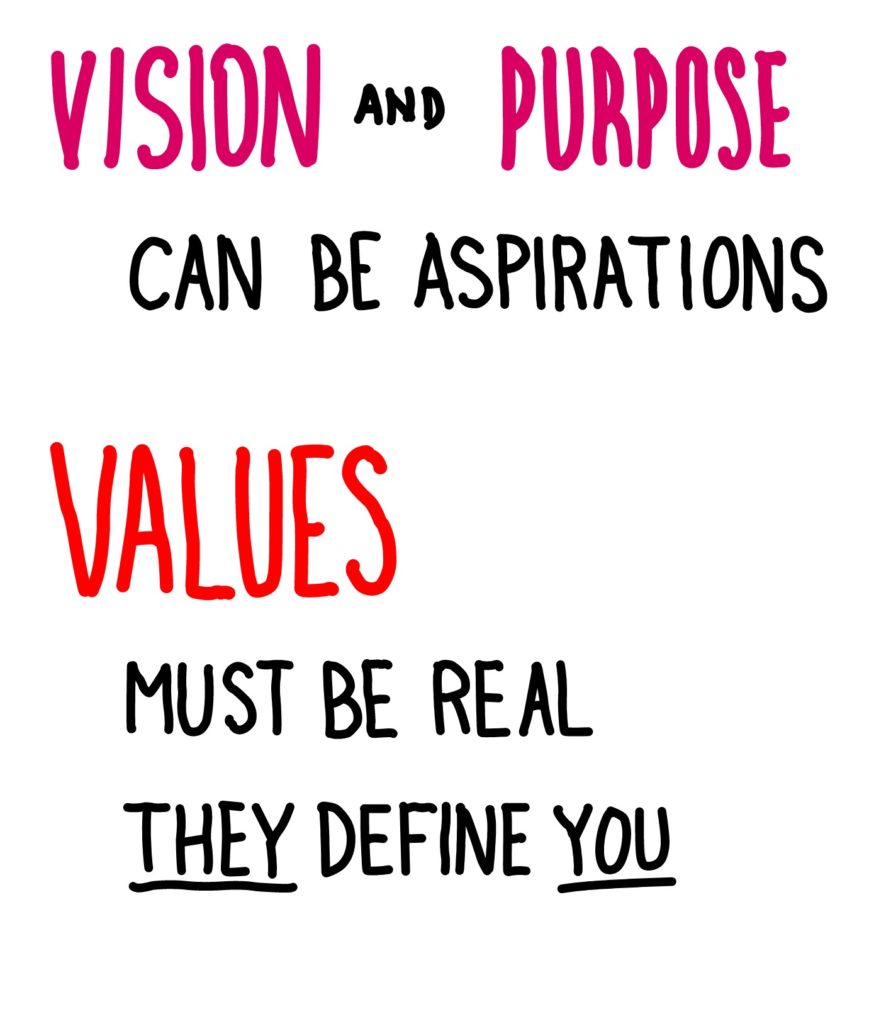
A company’s Vision and Purpose is typically aspirational, and hopefully inspirational. Values, however, need to be real, current, and practiced every day. The company’s culture and behavior will expose its real values, and employees, customers, and stakeholders will quickly see if the values are sincere.
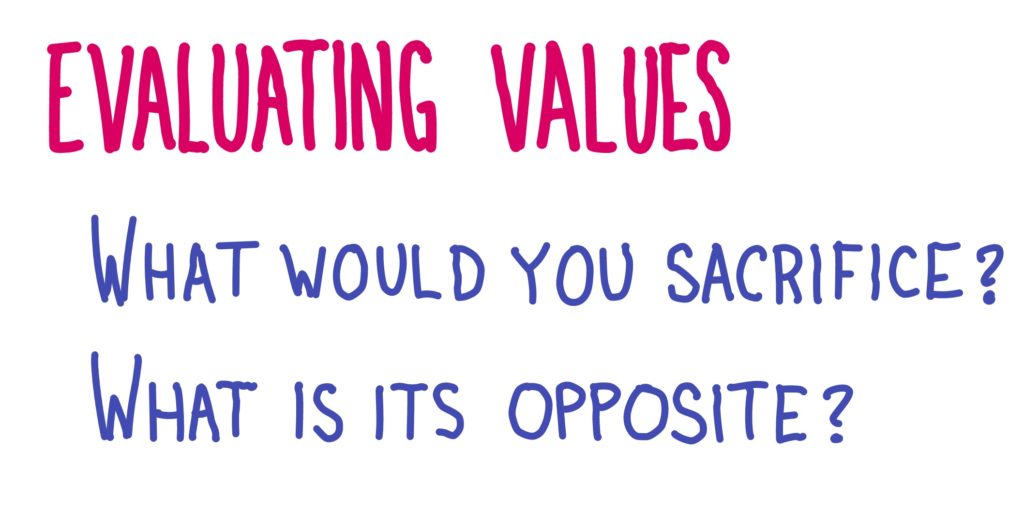
Values must come at a cost, otherwise they’re just nice things to do. If your values never get challenged, then you don’t really need them. They are articulated and shared specifically so that when they are challenged you do the right thing. A good way to test your value is to see if it has an opposite that could also be a chosen value, and that is where your sacrifices may come in.

We brainstormed a few competing values in class. Examples include doing what is best for the community vs. doing what is best for you; being willing to make decisions based on faith (or gut feel) vs. needing certainty through research or testing; and innovation vs. stability.
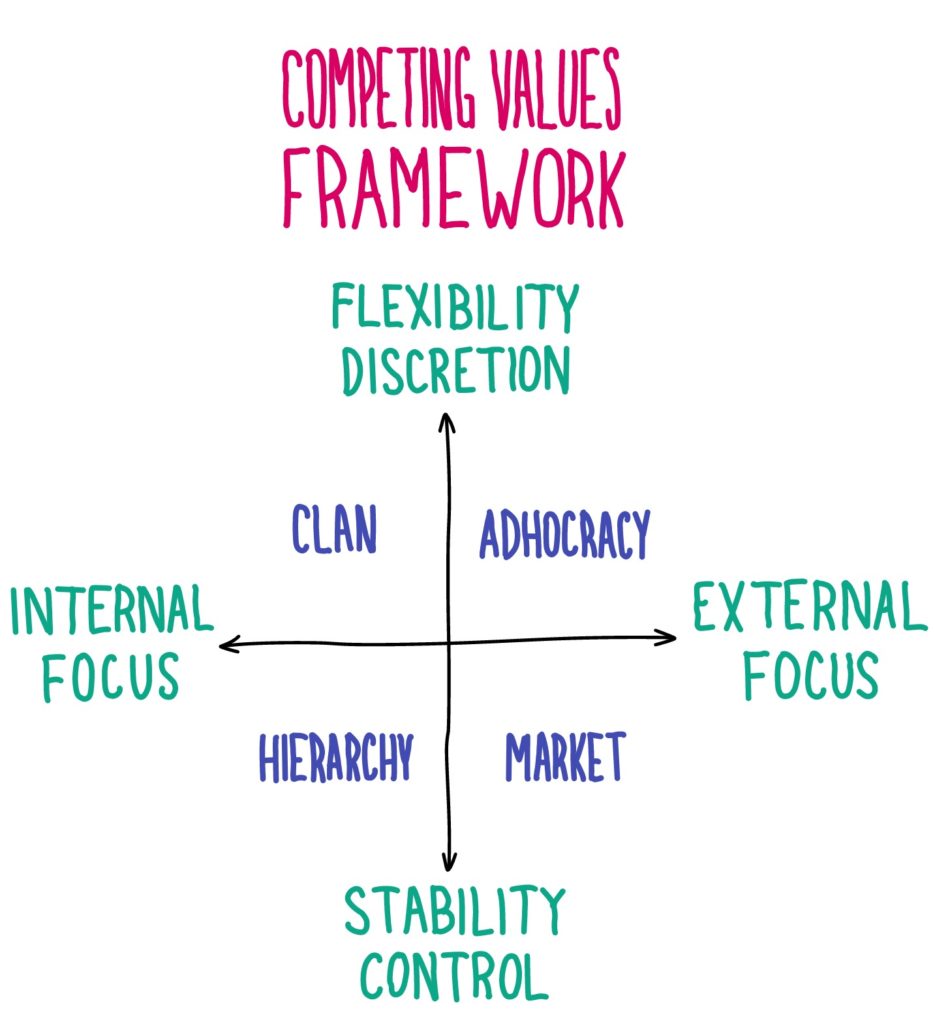
That brought us to the Competing Values Framework, a quadrant for companies that classifies them by internal/external and flexibility/stability. You can read much more detail about CVF at ocai-online.com (and many other places online). We explored the quadrants by looking at a few if PDI’s values in particular, and discussing our impressions of some other companies’ values .
Here’s a nice graphic that makes clan/adhocracy/market/hierarchy easier to grok.
The consulting company NOBL has an interesting Culture Contract that can help you very explicitly describe your company values, the cost of those values, how they impact the culture, how to recognize if they are broken, and what to do about it.
Company culture is the manifestation of the company’s values. It is seen visibly as you walk through their spaces, but there are invisible cues also. How people behave towards one another, how rewards are given out and promotions determined, how decisions are made – these are all part of the company culture that has its roots in the company values.

In class we talked about examples we’ve experienced in different work environments. (The invisible examples here are generally negative cultural traits, but invisible culture is just as likely to be positive.)
*It is important to take note of the extraordinary time that we are living in. Company values and cultures are under intense pressure and scrutiny now. We are becoming more aware of the systemic problems and biases that are built into our society and the companies we work for; people are speaking up, values are being challenged, and change is beginning to happen. Changing values in a company is difficult, but not impossible. It takes leadership and commitment, and the bravery to confront uncomfortable truths.
More Examples of Values and Culture
In this video, posted in 2013, Zynga employees and top management talk about Zynga’s seven core values. These seven values were on their website until sometime in the last year (2020). I couldn’t find them there last week. Don’t know why they took them down.
I think seven core values are too many. The video begins with them making fun of the fact they couldn’t remember them all. That’s funny, but also a problem.
Valve published their employee handbook in 2012, and it remains on their website today. It doesn’t talk explicitly about the company Values, but it does a wonderful job describing their culture (and how to survive there).
Netflix has a very long post under jobs.netflix.com/culture describing their values and culture. They describe not just their values, but how those are exemplified by the company and by their expectations of their employees. Very well done.
It’s also worth reading about Riot‘s current values, the issues that got them there, and how they are trying to fix it.
Google shares “Ten things we know to be true.”
Homework
Individual Presentations for Thursday, April 8th
Company Values and Culture
- Interview people at a company of your choice
- Find out the company Values
- Learn about the company Culture
- Where do they fit in the CVF?
- Aim for 8 minutes
- 2 minute intro about the company
- 1 minute about the people you interviewed
- List the company values
- Culture examples – do they support the values?
- CVF position
